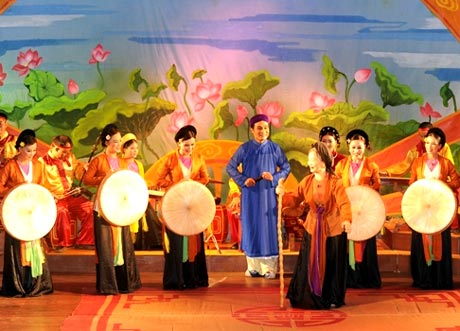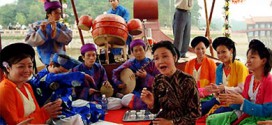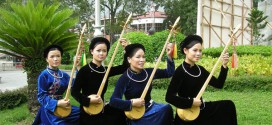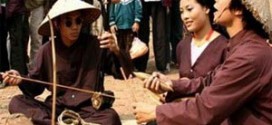Cheo is a form of popular theatre in Vietnam that has its roots in ancient village festivals.
It consists of folk songs with pantomime, intrumental music and dances, combined with instructive or interpretive sketches dealing with stories from legends, poetry, history or even daily life. Also brought into play are acrobatic scenes and magic. Cheo tells tales of chiefs, heroes and lovely maidens and offers an eclectic mix of romance, tragedy and comedy.

Traditionally Cheo was composed orally by anonymous authors. Today’s playwrights compose cheo operas along traditional lines : the characters in the plays sing time-tested popular melodies with words suited to modern circumstances.
The costomes, makeup, gestures and language create typical characters familiar to every member of the audience. The props are simple. As a result, there is a close interchange between the performers and the spectators.
A Cheo play could be put on stage in a large theater, but it could also be performed successfully on one or two bed mats spread in the middle of a communal house with a cast of only three: a hero, a heroine and a clown.
The sound of the Cheo drum has a magical power and upon hearing it, villagers cannot resist coming to see the play. The clown in a cheo play seems to be a supporting role, but actually he or she is very important to the performance. The clowns present a comic portrayal of social life, with ridiculous, satirical words and gestures, they reduce the audience to tears of laughter.
The national Cheo repertoire includes among others Truong Vien, Kim Nhan, Luu Binh – Duong Le, and Quan Am Thi Kinh, which are considered treasures of the traditional stage.
Cheo opera is an integral part of Vietnamese theater and is well-enjoyed by people in both country and town, and by foreign spectators as well. It is particularly relished by foreign tourists and overseas Vietnamese on a visit to their country of origin.
http://www.youtube.com/watch?feature=player_embedded&v=2M4NqdMKDf8
 Vietnamese Culture and Tradition
Vietnamese Culture and Tradition 


